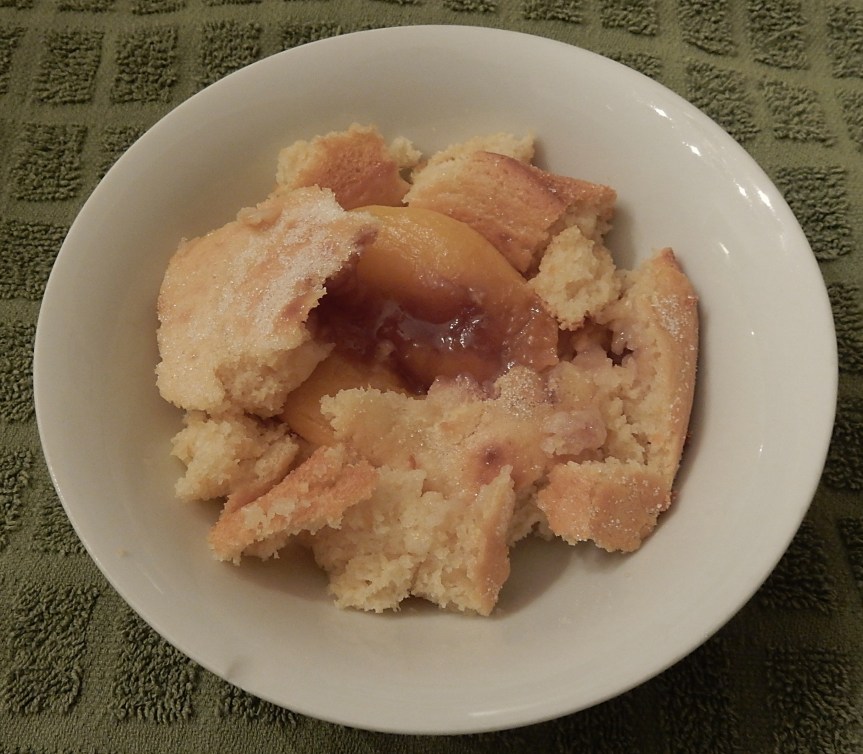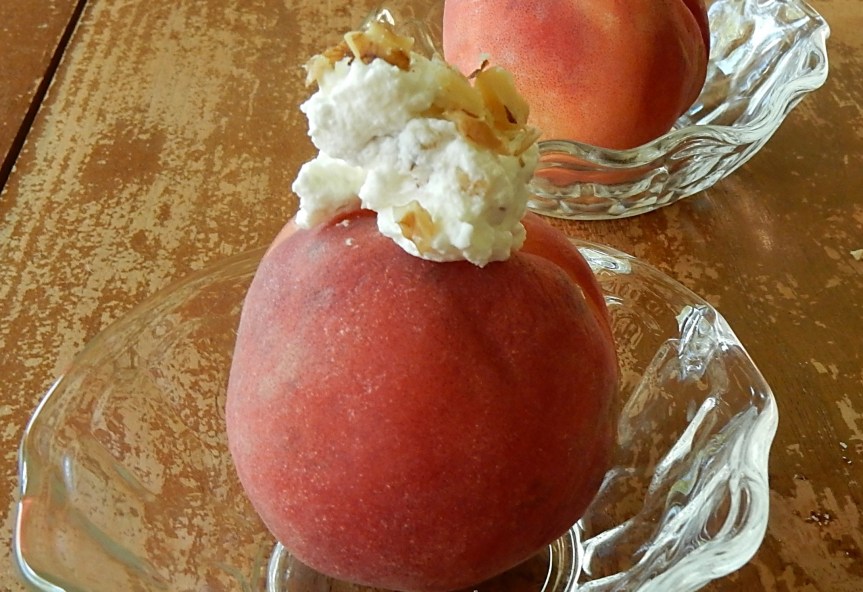
I was recently browsing through a hundred-year-old magazine, and came across a recipe for Canned Peach Pudding. Back then fresh fruit was scarce during the winter and early spring, so canned fruit was very popular. At the time, canned fruit (either home or commercially canned) was considered a modern option.
The Canned Peach Pudding was delightful. The pudding batter included pureed peaches, and whole peach halves (filled with a red jelly or strawberry jam), are placed in the batter and then additional batter is poured on top.
Here’s the original recipe:

When I put the baked pudding with the sugar on top under the broiler, the sugar did not brown, but the top of the pudding did begin to brown.
Here’s the recipe updated for modern cooks:
Canned Peach Pudding
12 canned peach halves (approximately 1 29 oz. can + 1 15 oz. can or 1 quart home canned peaches)
1 egg
1/2 cup milk
1/2 cup sugar
1 1/2 cups flour
3 teaspoons baking powder
1/4 teaspoons salt
2 tablespoons butter, melted
6 teaspoons red jelly or strawberry jam (I used current jelly.)
granulated sugar
Preheat oven to 350° F. Puree 6 of the peaches. In a mixing bowl combine the peach puree, milk, sugar, flour, baking powder, salt, and melted butter. Put half of the batter into an 8″ X 8″ baking dish. Arrange 6 peach halves, hollow side up, on top of the batter. Fill the center of each peach half with 1 teaspoon of red jelly or strawberry jam. Pour the remaining better on top. Bake for 40-50 minutes or until a wooden pick inserted into the center comes out clean. Remove from oven and lightly sprinkle with granulated sugar. Put under the broiler until the top of the baked pudding is lightly browned. Remove from oven.
 Old-fashioned Blackberry Pudding is a delightful summer dessert. The recipe I made was from a hundred-year cookbook, and it turned out well. The cake-like topping is flavored with cinnamon, and is very light and fluffy because it contains beaten egg whites. This recipe is a keeper, and I anticipate making again this summer.
Old-fashioned Blackberry Pudding is a delightful summer dessert. The recipe I made was from a hundred-year cookbook, and it turned out well. The cake-like topping is flavored with cinnamon, and is very light and fluffy because it contains beaten egg whites. This recipe is a keeper, and I anticipate making again this summer.



 I remember enjoying cakes with pineapple when I was young, so was intrigued by a hundred-year-old recipe for Hawaiian Delight. Hawaiian Delight is a cake that includes a cinnamon and sugar topping – which is then served with crushed pineapple spooned on top of cake pieces.
I remember enjoying cakes with pineapple when I was young, so was intrigued by a hundred-year-old recipe for Hawaiian Delight. Hawaiian Delight is a cake that includes a cinnamon and sugar topping – which is then served with crushed pineapple spooned on top of cake pieces.







